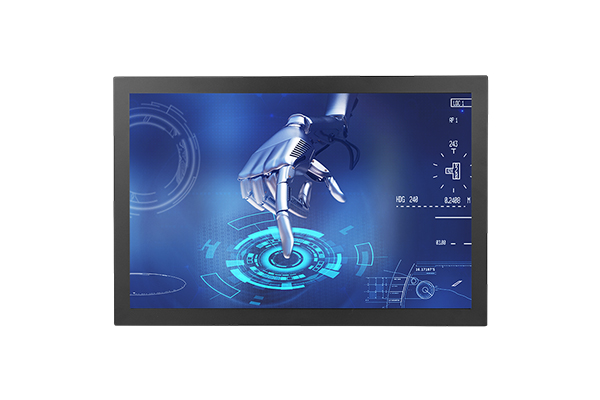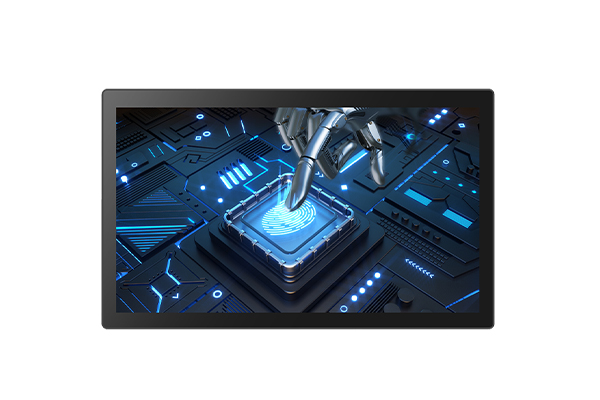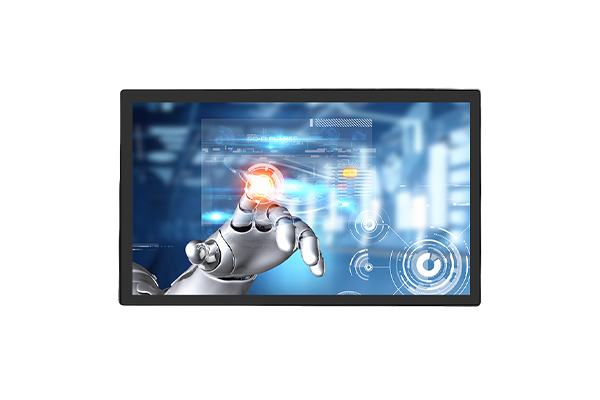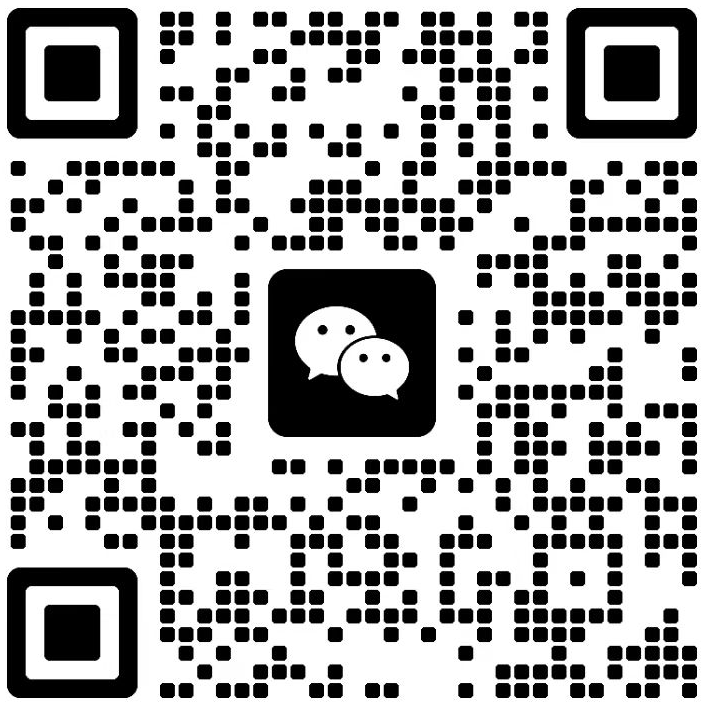How can integrated medical supplies main cabinet maintain high sensitivity and accurate recognition even when operated with gloves?
Release Time : 2025-10-20
In modern medical institutions, integrated How can integrated medical supplies main cabinet maintain high sensitivity and accurate recognition even when operated with gloves? serve as core equipment for the centralized management of medications, consumables, and instruments. Their ease of use and safety are directly linked to clinical efficiency and patient safety. With increasing intelligence, intelligent cabinets equipped with 22-inch touchscreens, cameras, and fingerprint recognition systems have become standard equipment for hospital supply management. However, medical staff generally wear latex, nitrile, or sterile gloves during daily work. Traditional capacitive touchscreens and fingerprint recognition modules often fail due to their inability to penetrate gloves, leading to operational interruptions, reduced efficiency, and even impacting emergency response speeds. Therefore, ensuring that integrated cabinets maintain high touch sensitivity and accurate identification even when wearing gloves has become a key challenge in the design of intelligent medical equipment.
1. Touchscreen Technology Innovation: Supporting Multimodal Touch Sensing
To address the challenges of operating with gloves, advanced integrated medical supply cabinets utilize industrial-grade multi-touch technology and optimized sensor sensitivity. The capacitive screens of traditional consumer electronics rely on the body's microcurrents for conduction, making them difficult to sense through insulating gloves. Medical cabinets are equipped with highly sensitive infrared touchscreens or surface acoustic wave touch technology. These screens don't rely on capacitance changes, but instead detect the blockage of infrared light by fingers or objects to locate the operating position. They provide accurate responses even when wearing 0.3mm thick latex or rubber gloves. In addition, some high-end models support dual-mode capacitive and electromagnetic touch, allowing users to operate with their regular fingers, gloved fingers, or a dedicated electromagnetic stylus, greatly enhancing user flexibility. System software optimizations have also been implemented, such as increasing icon spacing, expanding the touch hotspot range, and incorporating an operation feedback delay compensation algorithm to prevent accidental touches and response delays caused by gloves, ensuring smooth and natural interface operation.
2. Fingerprint Recognition Technology Upgrade: Penetrating Recognition and Multi-Algorithm Fusion
Fingerprint recognition is a key method for medical cabinets to achieve identity authentication, permission management, and accountability. Conventional optical or capacitive fingerprint sensors are nearly incapable of capturing valid images when covered by gloves. To address this, smart cabinets utilize penetrating ultrasonic fingerprint recognition technology or enhanced optical liveness detection modules. Ultrasonic fingerprint recognition uses high-frequency sound waves to penetrate the surface of gloves, capturing the three-dimensional structure of the dermis. This technology accurately recognizes hands even when wet, oily, or wearing thin gloves. Furthermore, this technology features liveness detection, effectively preventing forgery attacks such as photos and silicone molds. At the algorithm level, the system integrates a multi-feature fusion recognition engine that combines fingerprint local feature point matching, pressure distribution analysis, and contact area determination to improve recognition rates even under non-ideal contact conditions. Some devices also support a one-touch "glove mode" switch, automatically increasing sensor gain and extending the recognition window, further optimizing the user experience when wearing gloves.
3. Ergonomic Design: Interface Optimization and Simplified Operational Logic
In addition to hardware upgrades, the integrated cabinet's operating system has also been deeply optimized for use with gloves. The large 22-inch touchscreen features a high-contrast, large font, and icon-based interface, reducing the need for precise clicks. Common functions such as "Quick Medication Retrieval," "Emergency Outbound," and "Consumables Request" are designed as full-screen buttons, allowing operation with the edge of the palm or knuckles, reducing reliance on fingertip precision. The system also incorporates gesture recognition and voice assistance. In extreme situations, basic operations can be completed with simple swipes or voice commands, enhancing emergency response capabilities. Furthermore, the interface layout follows medical workflows, reducing operational layers and ensuring rapid access even in demanding clinical environments.
4. Environmental Adaptability and Reliability
The medical environment is complex and dynamic, and the main cabinet must operate reliably under conditions of high-temperature disinfection, high humidity, and frequent cleaning. Both the touchscreen and fingerprint module feature an IP65-rated dust and water-resistant design. The surface coating is chemically resistant and can withstand repeated wiping with alcohol and chlorine-based disinfectants without compromising sensitivity. Long-term user testing has shown that the optimized touch and recognition system maintains a recognition success rate of over 98% even after tens of thousands of consecutive gloved operations.
The integrated How can integrated medical supplies main cabinet maintain high sensitivity and accurate recognition even when operated with gloves? successfully addresses the industry's pain point of gloved operation by utilizing high-sensitivity touch technology, penetrating fingerprint recognition, intelligent algorithm optimization, and a user-friendly interface. This not only improves medical staff's work efficiency but also strengthens the security and traceability of medical supply management, truly achieving the deep integration of intelligent technology with clinical practice.
1. Touchscreen Technology Innovation: Supporting Multimodal Touch Sensing
To address the challenges of operating with gloves, advanced integrated medical supply cabinets utilize industrial-grade multi-touch technology and optimized sensor sensitivity. The capacitive screens of traditional consumer electronics rely on the body's microcurrents for conduction, making them difficult to sense through insulating gloves. Medical cabinets are equipped with highly sensitive infrared touchscreens or surface acoustic wave touch technology. These screens don't rely on capacitance changes, but instead detect the blockage of infrared light by fingers or objects to locate the operating position. They provide accurate responses even when wearing 0.3mm thick latex or rubber gloves. In addition, some high-end models support dual-mode capacitive and electromagnetic touch, allowing users to operate with their regular fingers, gloved fingers, or a dedicated electromagnetic stylus, greatly enhancing user flexibility. System software optimizations have also been implemented, such as increasing icon spacing, expanding the touch hotspot range, and incorporating an operation feedback delay compensation algorithm to prevent accidental touches and response delays caused by gloves, ensuring smooth and natural interface operation.
2. Fingerprint Recognition Technology Upgrade: Penetrating Recognition and Multi-Algorithm Fusion
Fingerprint recognition is a key method for medical cabinets to achieve identity authentication, permission management, and accountability. Conventional optical or capacitive fingerprint sensors are nearly incapable of capturing valid images when covered by gloves. To address this, smart cabinets utilize penetrating ultrasonic fingerprint recognition technology or enhanced optical liveness detection modules. Ultrasonic fingerprint recognition uses high-frequency sound waves to penetrate the surface of gloves, capturing the three-dimensional structure of the dermis. This technology accurately recognizes hands even when wet, oily, or wearing thin gloves. Furthermore, this technology features liveness detection, effectively preventing forgery attacks such as photos and silicone molds. At the algorithm level, the system integrates a multi-feature fusion recognition engine that combines fingerprint local feature point matching, pressure distribution analysis, and contact area determination to improve recognition rates even under non-ideal contact conditions. Some devices also support a one-touch "glove mode" switch, automatically increasing sensor gain and extending the recognition window, further optimizing the user experience when wearing gloves.
3. Ergonomic Design: Interface Optimization and Simplified Operational Logic
In addition to hardware upgrades, the integrated cabinet's operating system has also been deeply optimized for use with gloves. The large 22-inch touchscreen features a high-contrast, large font, and icon-based interface, reducing the need for precise clicks. Common functions such as "Quick Medication Retrieval," "Emergency Outbound," and "Consumables Request" are designed as full-screen buttons, allowing operation with the edge of the palm or knuckles, reducing reliance on fingertip precision. The system also incorporates gesture recognition and voice assistance. In extreme situations, basic operations can be completed with simple swipes or voice commands, enhancing emergency response capabilities. Furthermore, the interface layout follows medical workflows, reducing operational layers and ensuring rapid access even in demanding clinical environments.
4. Environmental Adaptability and Reliability
The medical environment is complex and dynamic, and the main cabinet must operate reliably under conditions of high-temperature disinfection, high humidity, and frequent cleaning. Both the touchscreen and fingerprint module feature an IP65-rated dust and water-resistant design. The surface coating is chemically resistant and can withstand repeated wiping with alcohol and chlorine-based disinfectants without compromising sensitivity. Long-term user testing has shown that the optimized touch and recognition system maintains a recognition success rate of over 98% even after tens of thousands of consecutive gloved operations.
The integrated How can integrated medical supplies main cabinet maintain high sensitivity and accurate recognition even when operated with gloves? successfully addresses the industry's pain point of gloved operation by utilizing high-sensitivity touch technology, penetrating fingerprint recognition, intelligent algorithm optimization, and a user-friendly interface. This not only improves medical staff's work efficiency but also strengthens the security and traceability of medical supply management, truly achieving the deep integration of intelligent technology with clinical practice.









